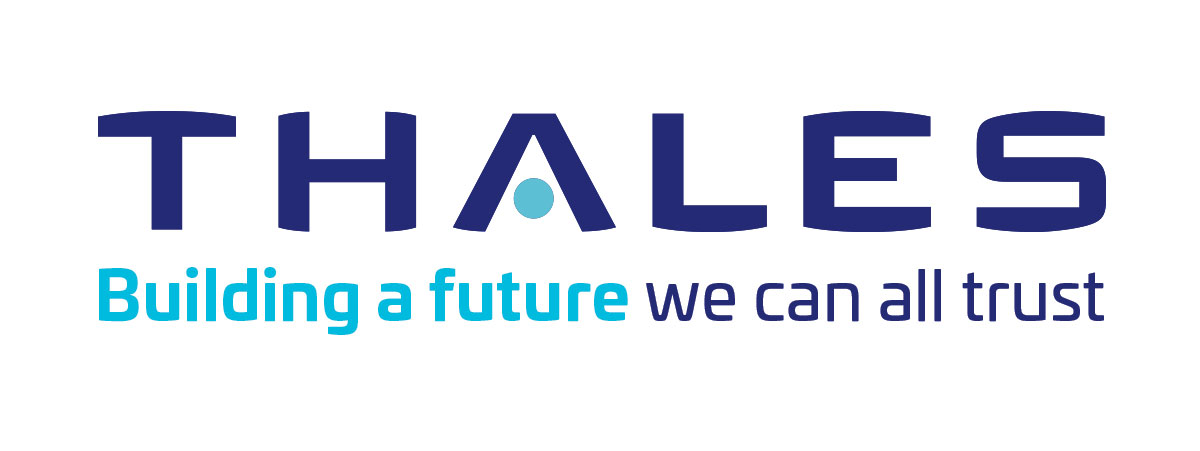NightRise Night Vision Goggles
For airland operations, make the difference during the night
Mastering Night Vision
Thales, an expert in optics for decades
Angénieux’s cinema zoom was selected by the American NASA in 1969 for the Apollo 11 mission thanks to its fast aperture, which was the only device able to see something on the moon.
This is the only zoom lenses in the world qualified by the American NASA.
The optical quality requested for Cinema Application is the highest on the market.
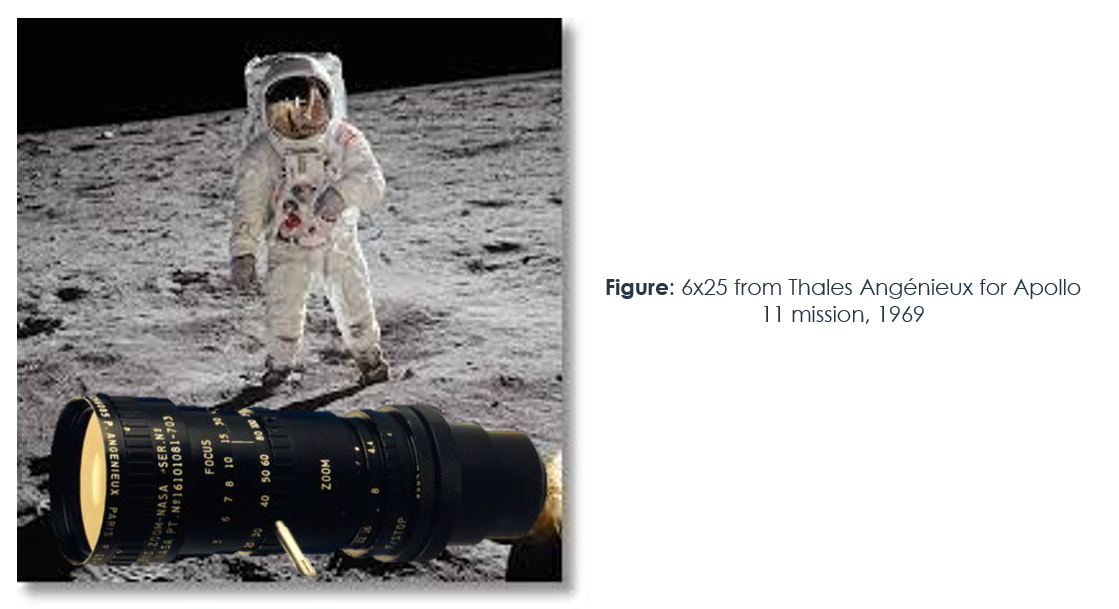
The knowleadge in terms of optical design for Night Vision Goggles has benefited from Thales expertise in optics for Cinema zoom lenses.
From hight quality NVGs with fast aperture optics for the most demanding operations (Pilots, Special Forces) to the realization of extremely compact optics and robust in militarized environments, you can rely on Thales’ NightRise Family.
Discover Angénieux
Thales, Soldier Optronics Expert since 1996
Thales became a pioneer in the optronics field with the invention in 1996 of its first biocular Night Vision Goggles (NVG), known as LUCIE.
Reliable and combat proven devices with more than 110,000 NVGs in operation worldwide, selected by French and NATO forces.
User’s centric, to provide solutions that meet multiple evolving needs.
Superiority in modern warfare with devices at the heart of today’s collaborative combat stakes.
Trusted partner to raise challenges for tomorrow’s battlefield benefiting from a strong community created around the Sophie brand.
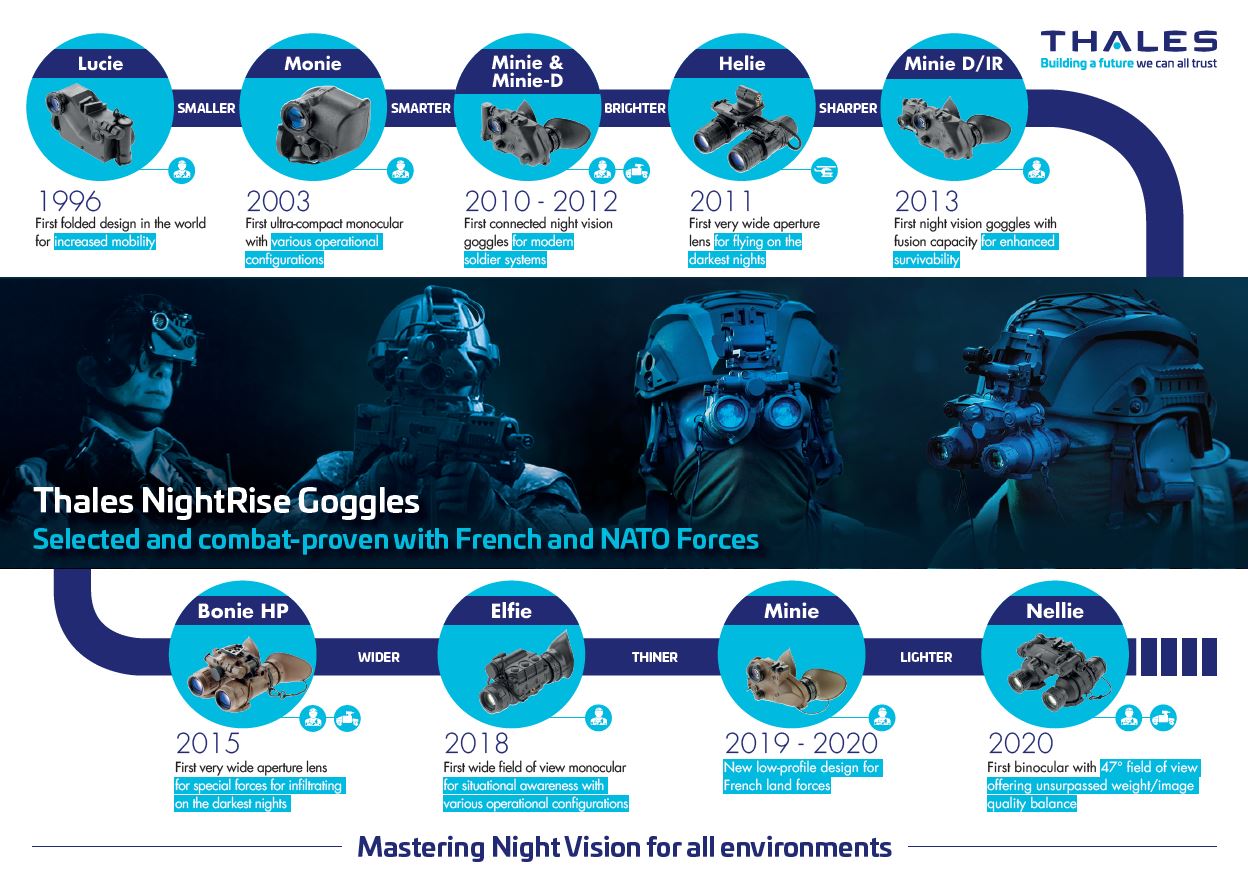
NightRise and image intenSifier tubes
Inspired by the vision of nocturnal animals, night vision goggles (NVGs) operate on the principle of residual light amplification. Like the retina in an animal’s eye, the electronic components in the goggles capture the photons that come through the lens and convert them into electrons. These electrons are then accelerated under high voltage in a vacuum tube and projected onto a phosphor screen. The phosphor screen acts like a cathode-ray screen, retransmitting the signals in the form of images.
The type of tube depends on the type of device, and choosing the right tube — and above all the right architecture — is a crucial design decision. Thales’s world-class optro-mechanical know-how offers designers much more flexibility in the choice of tubes and lets them find the optimum combination of night vision performance and usability in the theatre of operations.
For new-generation night vision goggles, an 18 mm tube offers a number of key advantages over a 16 mm tube:
-
Stronger optical concentration
-
Higher resolution and MTF contrast
-
Better DRI performance
-
Lower sensitivity to cosmetic artefacts like black spots
On the other hand, conventional 18 mm tubes are heavier and less compact than their 16 mm counterparts, which could have a negative impact on the Size, Weight and Power (SwaP) performance of the night vision goggles. Glass-to-glass tubes, however, are significantly lighter than twisted-fibre tubes, making it possible to reduce the weight of the device, accommodate innovative architectures and offer a more compact optical design.
Read our white paper to understand the science behind the choice of tubes in Thales night vision goggles.
For airland operations, make the difference during the night!
Discover our NightRise family portofolio
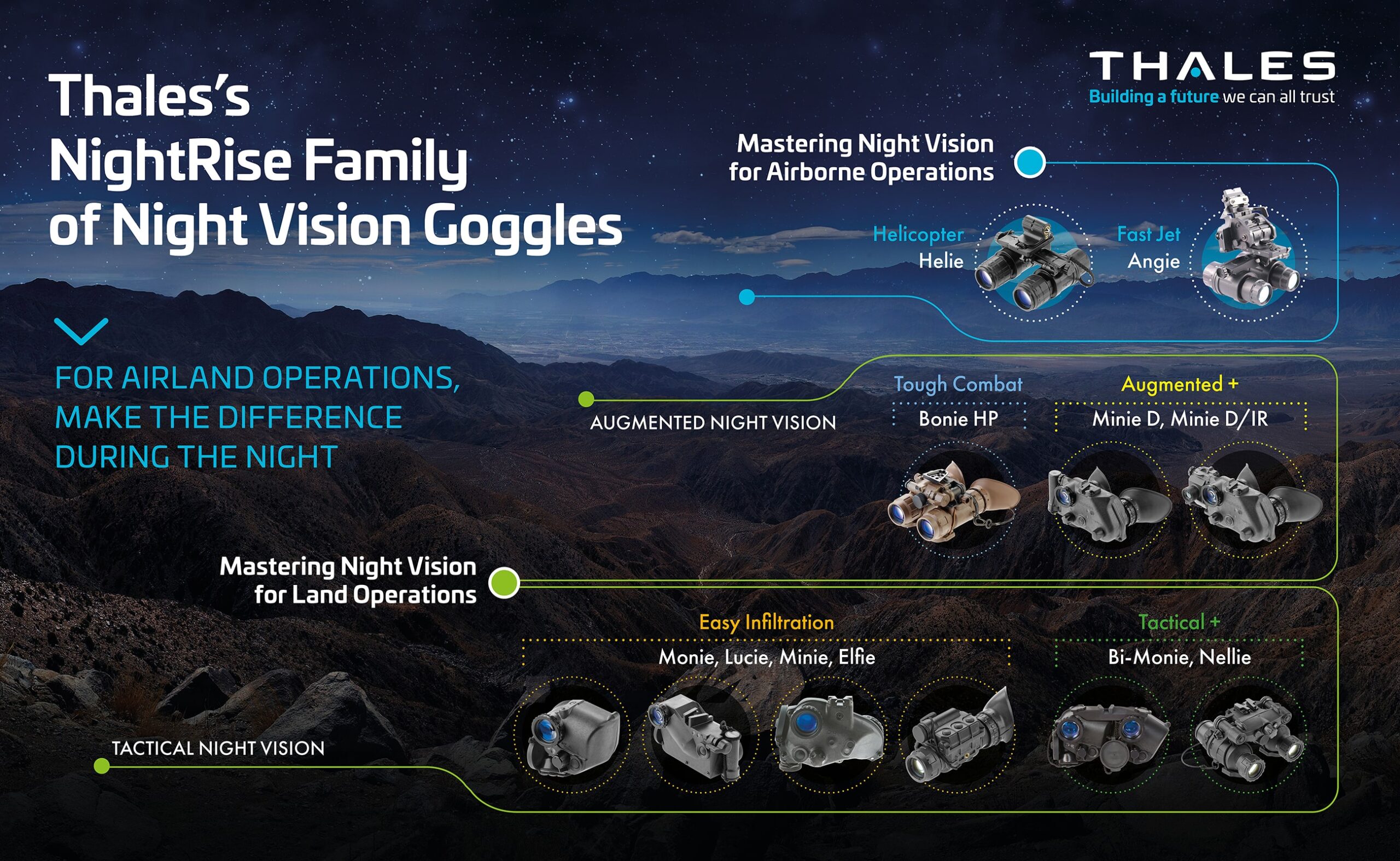
Air NVG
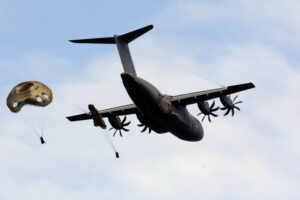
Mastering Night Vision for Airborne Operations
A complete range of I² goggles to give the Pilots the right advantage to perform their mission.
Land NVG

Mastering Night Vision for Land Operations
A complete range of I² goggles to give the Land Forces the right advantage to perform their mission.
